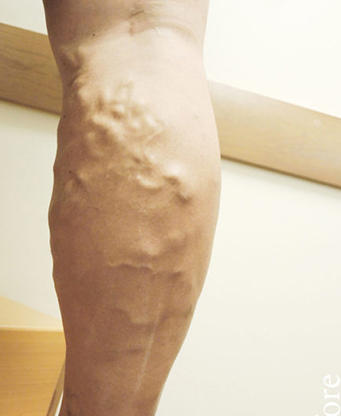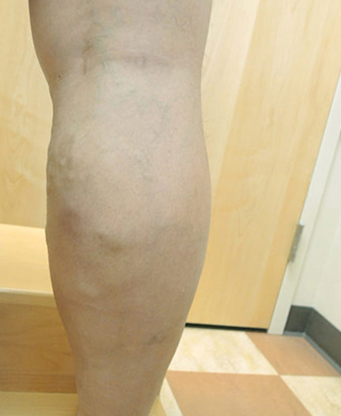Venaseal™
Jump To
The VenaSeal™ closure system is the first and only treatment approved for use in the U.S. that uses an advanced medical adhesive to safely and effectively close the diseased vein segment.
Davis Dermatology is one of the first in the region performing the VenaSeal™ closure system. Tumescent anesthesia is not required. Unlike other varicose vein treatments, there is rapid return to normal activities. The VenaSeal™ closure system delivers a small amount of specially formulated medical adhesive to the diseased vein. The adhesive closes the vein and blood is rerouted through nearby healthy veins. Unlike other heat-based treatments, the VenaSeal™ closure system does not require multiple injections of a dilute local anesthetic (tumescent anesthesia), enabling patients to rapidly return to normal activities following the procedure. The VenaSeal™ closure system also eliminates the risk of burning or nerve injury associated with thermal based procedures and may not require the use of compression stockings post procedure. The VenaSeal™ closure system is designed to minimize patient discomfort and reduce recovery time. More than 190 million people have CVI or varicose veins globally. More than 30 million Americans suffer from varicose veins, or the more serious form of venous disease called chronic venous insufficiency (CVI), yet the majority remains undiagnosed and untreated. Venous reflux disease, also known as chronic venous insufficiency, develops when the valves that keep blood flowing out of the legs and back to the heart become damaged or diseased.

If venous reflux disease is left untreated, symptoms may worsen over time. As a result, vein valves will not close properly, leading to symptoms such as:
- Varicose veins
- Leg pain, aching, or cramping
- Leg or ankle swelling
- Leg heaviness and fatigue
- Skin changes or rashes
- Ulcers, open wounds, or sores
- Once the valves in the leg stop working properly, they cannot be repaired. Treatment options available include closing or removing the damaged vein and then redirecting blood flow to healthy veins. Traditionally, surgical stripping or heat-based treatment options are used.
However, the VenaSeal™ closure system treats the diseased saphenous veins, without traditional heating or stripping the vein out of the leg.
What is venous reflux disease?
Healthy leg veins have valves that keep blood flowing to the heart. Venous reflux disease, also known as chronic venous disease, develops when the valves stop working properly and allow blood to flow backward (i.e., reflux) and pool in the lower leg veins. If venous reflux disease is left untreated, symptoms can worsen over time.
As a result, vein valves will not close properly, leading to symptoms such as:
- Varicose veins
- Leg pain, aching or cramping
- Leg or ankle swelling
- Leg heaviness and fatigue
- Skin changes or rashes
- Ulcers, open wounds or sores
How prevalent is venous reflux disease?
More than 190 million people have CVI or varicose veins globally. (More than 30 million Americans) Suffer from varicose veins, or the more serious form of venous disease called chronic venous insufficiency (CVI), yet the majority remains undiagnosed and untreated.
What is the VenaSeal™ closure system?
The VenaSeal™ closure system is the only non-thermal, non-tumescent, non-sclerosant procedure approved for use in the U.S. that uses a specially formulated medical adhesive that closes the diseased vein.
What does it treat?
The VenaSeal™ closure system treats symptomatic venous reflux disease in the lower extremity superficial venous system, often the underlying cause of painful varicose veins.
How does it work?
During the procedure, a trained clinician fills a syringe with the medical adhesive, which is inserted into the VenaSeal™ closure system’s dispensing gun that is attached to a catheter. The catheter is advanced into the diseased vein under ultrasound guidance. The catheter is placed in specific areas along the diseased vein and the clinician conducts a series of trigger pulls to deliver the medical adhesive. Compression is applied to the leg during the procedure.


